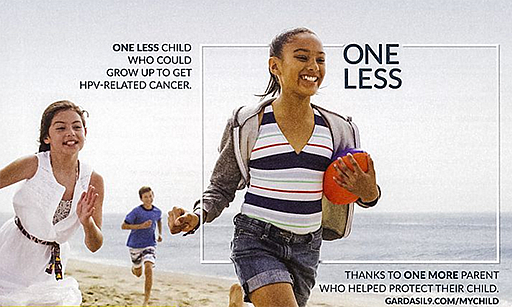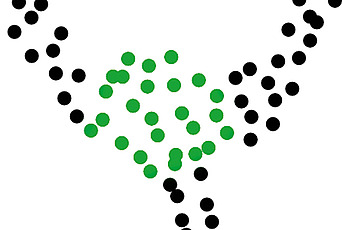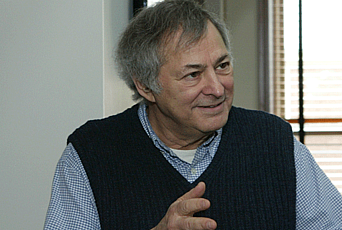Preventing Cervical Cancer

When two vaccines appeared on international markets in 2006–07 to protect adults from selected infections that can lead to cervical and related cancers, they were seen as tools of cancer prevention and soon taken up by many countries (Bruni et al. 2016). Their prices also set records, about $120–$190 a dose in the United States. Even with substantial discounts, many lower- and middle-income countries found them unaffordable. Yet more than 85 percent of the 528,000 new cases of cervical cancer and 266,000 deaths per year worldwide occur in these countries to women in their 30s and 40s (Globocan 2015). High prices continue to be a serious barrier to access, prevention, and reducing global health inequality. Could they be lower and still be profitable? Beyond wider access, how effective are they, and why do they remain controversial?
In the spring of 2013, both Merck and GlaxoSmithKline (GSK), the manufacturers of the two vaccines, Gardasil and Cervarix respectively, offered deep discounts, charging about $4.50 a dose to Gavi1—the global vaccine alliance that organizes and subsidizes the vaccine market for the world’s poorest countries (McNeil 2013). The companies claimed that the price to Gavi was their manufacturing cost without profits or any other costs taken into consideration. Even this price, however, is about nine times what Gavi calculates these poor countries can afford for a vaccine. Gavi-eligible countries contribute about $0.20-$0.70 per dose, and taxpayers in rich countries pay the rest through donations.
The manufacturers did not actually reveal their costs, which are closely held and very difficult to obtain. Kate Elder, a vaccine policy specialist at the international humanitarian organization, Médecins Sans Frontières (MSF) or Doctors without Borders, responded by asking, “Why are the pharmaceutical companies still making profits off the backs of the poorest countries?”(McNeil 2013). Based on what she knew about probable costs of other vaccines, she sensed that this price was high. Soon after, she called to ask if I could assemble firmer details about the real costs.
It has taken a couple of years for me and a team of student volunteers from Princeton University’s Global Health Program and its Department of Molecular Biology, to assemble a detailed analysis of the capital, equipment, materials, quality controls, labor, and administrative costs to produce the original two HPV vaccines, Gardasil and Cervarix. This fall, while I was working on a project at IAS, the leading journal Vaccine published our results (Clendinen et al. 2016).
Employing sensitivity analysis, we found that manufacturing costs for the first set of batches of Gardasil to affluent nations averaged $2.05–$3.07 a dose, and costs for the second set for developing countries averaged only $0.48–$0.59 a dose. At comparable volume, Cervarix would cost about the same; but because it sells a lower quantity, its per-unit production costs were $6.16–$9.39 a dose.
Gavi countries and others prefer Gardasil because it protects against more serotypes and genital warts. Thus most donations to Gavi to subsidize doses go to extra profits. The article in Vaccine concludes that Gavi needs to renegotiate Gardasil’s price to affirm its commitment to pricing without profits for poorer nations. This would enable Gavi to put the donations to better use and make Gardasil affordable to countries with incomes just above Gavi’s cutoff income for subsidies. Making prices affordable is much better than high prices combined with special gifts and discounts (Torreele and Mazzucato 2016).
Questions about Prevention
As soon as one looks beyond costs, prices, and access to the sociologically constructed realities surrounding these vaccines, however, one sees the manufacturers “turning, turning in the widening gyre” (Yeats 1920) around their own simplified accounts of how these vaccines work, around unproven effectiveness across the fifteen- to twenty-year latency period of these viruses, and around the inverse relationship between who takes the vaccines and who needs them. Let’s start with the simplified accounts.
In 2008, Keith Wailoo, the Townsend Martin Professor of History and Public Affairs at Princeton, brought together scholars from anthropology, communications, history, medical ethics, pathology, psychology, and sociology to analyze the contentious marketing of Gardasil. One chapter in the resulting book describes how more than three-quarters of women are likely to become infected by precancerous cervical lesions but very few become detectable and even fewer become cancerous (Wailoo et al. 2010). Most of these lesions regress spontaneously without treatment. Routine screening picks up the others, the World Health Organization reports, and “…these can easily be treated and cancer avoided”(WHO 2016). While manufacturers can emphasize the prevalence of lesions, the risk of cancer is low. Cervical cancer ranks only fifty-fourth as a cause of death in the United States and accounts for 0.15 percent of deaths (National Vital Statistics System 2016).
Risk is much higher for poor girls and women. For example, a study in England found that 80 percent of cervical cancer incidence occurred in the bottom two-fifths of the population, while none occurred in the top fifth and 7 percent in the second fifth (Shack et al. 2008). This stark inequality echoes the global picture and calls for a biosocial approach to researching and testing medicines (Bruni et al. 2016). The chances of higher-risk serotypes leading to cancer seem to depend on several cofactors, such as impaired immune responses, which vary inversely with income, lifestyle risks, sexual activity, and frequency of reinfection (Cancer Treatment Centers of America 2017). Thus, framing HPV vaccination as a simple solution deflects attention away from these inequalities of risk between affluent women who have good immune responses, access to routine screening and good care, and poorer women who do not.
Despite years of impressive research, uncertainties remain at multiple levels about how HPV infections cause cancer. There are more than one hundred HPV serotypes, and about twelve to fifteen are said to be high-risk. But the etiology of any HPV type is problematic, writes Dr. Robert Aronowitz, Professor and Chair of the History and Sociology of Science at the University of Pennsylvania and also an experienced internist, “. . . as are causal claims based upon them, for example, the claim that HPV types 16 and 18 are the cause (his emphasis) of 70 percent of cervical cancer”(Wailoo et al. 2010). While numerous studies that show the vaccines are cost-effective assume they prevent cancer, independent critics point out we don’t know and “the real impact of HPV vaccination on cervical cancer will not be observable for decades” (Haug 2008).
The commercial marketing of these vaccines, however, disregards such complexities and masks uncertainties (Wailoo et al. 2010). Marketing hides the fact that these are vaccines against sexually transmitted diseases by promoting them as anti-cancer vaccines, even though effectiveness depends on taking them before sexual activity. Sexual activity in the trial subjects clouds outcomes,(Lenzer 2011) and fully half of all U.S. females aged fourteen to nineteen report having sex, 52 percent of them with three partners or more (Markowitz et al. 2016).
Meantime, Merck developed an expanded version of Gardasil that protects against nine serotypes associated with cervical, vulvar, vaginal, and anal cancers, which may have other causes. Merck states that Gardasil 9 “does not eliminate the necessity for girls to undergo recommended cervical cancer screening later in life.” “The duration of immunity of Gardasil 9 has not been established” (MerckVaccines 2017).
The marketing also hides the importance of administering the vaccines to whole populations and achieving herd immunization. Gardasil’s controversial “One Less” marketing campaign promoted it as a vaccine that prevents cancer in individuals: if each adolescent or parent chooses to vaccinate, there will be “one less” victim of cervical cancer (Wailoo et al. 2010). This suggests that each individual who is vaccinated is now safe, protected, even though the fine print states that routine screening is still necessary. Marketing vaccines to individuals illustrates a wider “pharmaceuticalization” of risk factors that may lead in the future to disease (Mamo and Epstein 2014, Wailoo et al. 2010).
Given the necessity of routine screening, despite its false positives and possible unnecessary treatment, how much more will women in affluent countries actually benefit from the vaccine? Marketing aims to allay their fears and anxieties. Yet the risks remain after vaccination, and a substantial percentage of females in each country take fewer than the necessary two doses (Harper et al. 2013). To the extent that marketing lulls women into believing they are covered and no longer need routine screening, cancer rates could increase (Lenzer 2011). Further, we know little about whether other serotypes will multiply to replace those blocked by vaccination in a population (Wailoo et al. 2010; Guo, Hirth, and Berenson 2015). Throughout history, viruses have adapted and persisted.
Evidence that HPV vaccines prevent cancer is indirect because the latency period of fifteen to twenty years exceeds the time since use began. Meantime, detailed studies keep reporting impressive declines in the high-risk serotypes, like a 62.6 percent decline despite only a third of females ages fourteen to twenty-nine taking one dose or more (Markowitz et al. 2016). And parents remain wary, despite multipronged campaigns urging vaccination and even trying to mandate it. Their concerns about adverse side effects have increased (Darden et al. 2013). Extensive testing has shown HPV vaccines to be safe, though sponsoring companies test their own products with trials designed to produce such evidence, (Lenzer 2011), Gerhardus and Razum 2010), and they fund the FDA reviewers.
We will not know for years how effectively HPV vaccines actually prevent cervical and related cancers or how the population of viral serotypes adapts. Meantime, however, we now know that prices can be much lower and still profitable for countries where most of the cancer, hospitalizations, and deaths occur.
For further reading:
Three Shots at Prevention contains a unique set of readable social science and medical essays that provide broader insights into the construction of risk, patienthood, parenthood, and ethics.
The Right Shot (2015, Second Edition) by MSF (Doctors without Borders) provides a well-documented, global analysis of barriers to access to vaccines. One section concerns HPV vaccines, and another explores the larger themes of global inequalities and the role of vaccines.
Acknowledgements: Comments to earlier drafts by Robert Aronowitz, Jonathan Darrow, Jeanne Lenzer, and Peter Redfield are much appreciated, as is support from the Institute’s School of Social Science and my chairman, Stephen Scheinthal.
1 GSK’s price for Cervarix to Gavi was $4.60. In this and many other ways, I have simplified the story for a general, short essay.
Bruni, Laia, Mireia Diaz, Leslie Barrionuevo-Rosas, Rolando Herrero, Freddie Bray, and et al. 2016. "Global estimates of human papillomavirus vaccination coverage by region and income level: a pooled analysis." Lancet Global Health 4 (7):e453-63.
Cancer Treatment Centers of America. 2017 (Feb). "Cervical Cancer Risk Factors." Cancer Treatment Centers of America. http://www.cancercenter.com/cervical-cancer/risk-factors/.
Clendinen, Chaevia, Yapei Zhang, Rebecca N. Warburton, and Donald W. Light. 2016. "Manufacturing costs of HPV vaccines for developing countries." Vaccine 34 (48):5984-89.
Darden, Paul M. , David M. Thompson, James R. Roberts, Jessica J. Hale, Charlene Pope, Monique Naifeh, and Robert M. Jacobson. 2013. "Reasons for Not Vaccinating Adolescents: National Immunization Survey of Teens, 2008–2010." Pediatrics 131 (4):645-51.
Gerhardus, Ansgar, and Oliver Razum. 2010. "A long story made too short: surrogate variables and the communication of HPV vaccine trial results." Journal of Epidemiology and Community Health 64 (5):377-78.
Globocan. 2015. "Estimated Cervical Cancere Morality Worldwide in 2012." WHO. http://globocan.iarc.fr/old/FactSheets/cancers/cervix-new.asp.
Guo, Fangjian , Jacqueline M. Hirth, and Abbey B. Berenson. 2015 (Apr 19) "Comparison of HPV prevalence between HPV-vaccinated and non-vaccinated young adult women (20-26 years)." AACG Annual Meeting, Philadelphia.
Harper, Diane M. , Inge Verdenius, Felicia Ratnaraj, Anne M. Arey, Beth Rosemergey, and et al. 2013. "Quantifying Clinical HPV4 Dose Inefficiencies in a Safety Net Population." PLOS ONE 8 (11):e77961.
Haug, Charlotte. 2008. "Human Papillomavirus Vaccination — Reasons for Caution." New England Journal of Medicine 359 (8):861-62.
Lenzer, Jeanne. 2011 (Nov 23). "How effective is the HPV vaccine at preventing cancer? A closer look..." The Crux. http://blogs.discovermagazine.com/crux/2011/11/23/how-effective-is-the-hpv-vaccine-at-preventing-cancer-a-closer-look/.
Mamo, Laura, and Steven Epstein. 2014. "The pharmaceuticalization of sexual risk: Vaccine development and the new politics of cancer prevention." Social Science & Medicine 101:155-65.
Markowitz, Lauri E., Gui Liu, Susan Hariri, Martin Steinau, Eileen F Dunne, and Elizabeth R. Unger. 2016. "Prevalence of HPV After Introduction of the Vaccination Program in the United States." Pediatrics 137 (3):e20151968.
McNeil, DG Jr. 2013 (May 9). "Cancer vaccines get a price cut in poor nations." The New York Times. http://www.nytimes.com/2013/05/10/health/prices-cut-for-hpv-cervical-cancer-vaccines-for-neediest.html?pagewanted=all&_r=1&
MerckVaccines. 2017. "Indication for Gardasil 9." MerckVaccines. https://www.merckvaccines.com/Products/Gardasil9/indication.
National Vital Statistics System. 2016. National Vital Statistics Reports: Deaths: Final Data for 2014. In National Vital Statistics Reports. Washington DC: U.S. Department of Health and Human Services : Centers for Disease Control and Prevention
Shack, Lorraine , Catrina Jordan, Catherine S Thomson, Vivian Mak, and Henrik Møller. 2008. "Variation in incidence of breast, lung and cervical cancer and malignant melanoma of skin by socioeconomic group in England." BMC Cancer 8:271-81.
Torreele, Els, and Mariana Mazzucato. 2016. "Fair vaccine pricing please, not random acts of charity." BMJ 355 (i6173):doi:10.1136/bmj.6173.
Wailoo, Keith, Julie Livingston, Steven Epstein, and Robert Aronowitz, eds. 2010. Three Shots at Prevention: The HPV Vaccine and the Politics of Medicine's Simple Solutions. Baltimore: Johns Hopkins University Press.
WHO. 2016. Fact Sheet: Human papillomavirus (HPV) and cervical cancer. Geneva: World Health Organization
Yeats, W.B. 1920. "The Second Coming." The Dial. https://en.wikipedia.org/wiki/The_Second_Coming_(poem).

